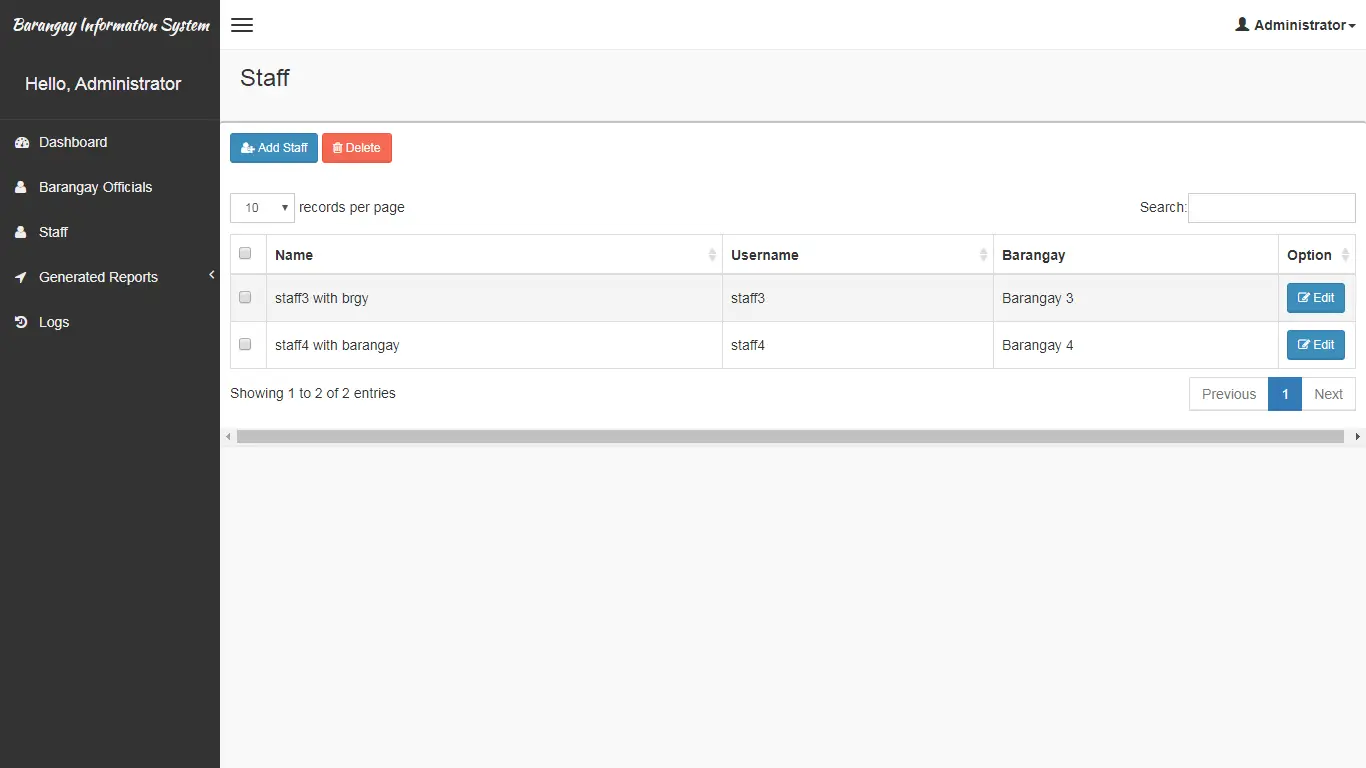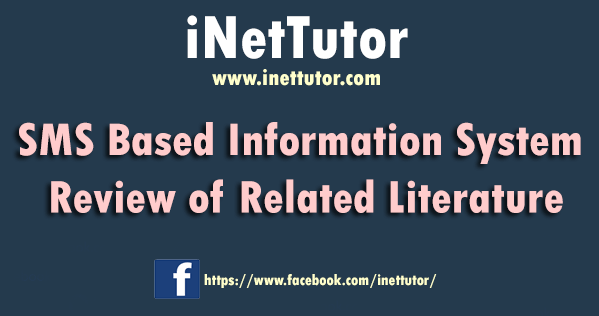School Announcement System using SMS
The first step in developing a School Announcement System using SMS is careful planning and gathering requirements. This ensures that the system meets the needs of the institution while maintaining efficiency and scalability. By clearly defining the objectives, identifying necessary features, and choosing the right SMS service, you can set the foundation for a successful project.
- Define Objectives and Key Features
Start by outlining the main goals of the system. Determine which features are essential, such as Year Level, Class/Section Management, Student/Faculty Information, and different SMS sending options (by student, class, year level, or broadcast to all). - Gather Functional and Non-functional Requirements
Collect both functional requirements (e.g., sending speed, ease of managing class information) and non-functional requirements (such as scalability and security). Consider how many messages the system will send daily and whether it needs to handle future expansions. - Identify Required SMS API Services
Choose the right SMS gateway service that will integrate seamlessly with the system. Options like Twilio, Nexmo, or local SMS providers are popular choices, depending on the location and budget. It’s crucial to ensure that the chosen service offers reliable delivery and message tracking.
System Design
Table of Contents
In this phase, the overall architecture and data structure for the School Announcement System using SMS are designed. The system must be robust, scalable, and capable of efficiently handling student and faculty data, while providing seamless SMS communication.
- Database Design
A well-structured database is key to managing year levels, classes, students, and faculty details. Here’s a breakdown of essential database tables:- tbl_year_level: Stores the different year levels in the school.
- Columns: year_level_id, year_level_name
- tbl_class: Manages class and section information, linked to year levels.
- Columns: class_id, class_name, year_level_id
- tbl_student: Contains student details, including their year level, class, and contact information for SMS.
- Columns: student_id, name, year_level_id, class_id, contact_number
- tbl_faculty: Stores faculty information and contact details.
- Columns: faculty_id, name, contact_number, email
- tbl_class_assignment: Links faculty to the classes they are assigned to teach.
- Columns: assignment_id, faculty_id, class_id
- tbl_sms_log: Keeps track of all SMS messages sent, including recipient information and message status.
- Columns: log_id, recipient_type (student/faculty), recipient_id, message, date_sent, status
- tbl_sms_settings: Stores the settings and credentials needed for the SMS API.
- Columns: setting_id, api_key, api_secret, sender_id
- tbl_year_level: Stores the different year levels in the school.
- Backend Architecture
The backend handles data processing, SMS management, and logging. It can be built using technologies like PHP or Node.js, depending on project requirements.- SMS Sending Engine: Develop an SMS sending engine that integrates with the chosen SMS API (e.g., Twilio, Nexmo). This engine will handle message delivery based on year level, class, or specific students.
- Scheduling Feature (Optional): Implement an SMS scheduler for future-dated messages, allowing administrators to send announcements at predetermined times.
By designing an efficient database and a reliable backend, the system can ensure smooth communication across all levels of the school.
User Interface Design
The user interface (UI) for the School Announcement System using SMS should be simple, user-friendly, and responsive. By using modern web technologies like HTML, CSS, JavaScript, or frontend frameworks such as Bootstrap or AdminLTE, the system will provide an intuitive experience for administrators managing announcements and SMS communications.
- Dashboard
The dashboard serves as the central hub for administrators, providing an overview of system activity.- Displays recent announcements, pending messages, and the current system status.
- Provides quick links to different modules like Year Level Management, SMS Sending, and Logs.
- Year Level & Class Management
This module allows admins to manage year levels and class sections efficiently.- Forms for adding, editing, and deleting year levels and class/section information.
- Easy-to-navigate tables for viewing existing year levels and class data.
- Student Info Management
Administrators can add, edit, and update student details here.- Forms for entering student information, including contact numbers for SMS.
- Tables displaying student records, filterable by year level or class.
- Faculty Info Management
Similar to student management, this module is designed for managing faculty details and class assignments.- Forms for adding or editing faculty contact information.
- Assign faculty members to specific classes, linking them to the appropriate sections.
- SMS Settings
A dedicated page for configuring SMS API credentials, such as API keys and sender IDs.- Allows the administrator to update or test SMS settings.
- Ensures seamless integration with the chosen SMS API service.
- SMS Sending Module
This is the core functionality of the system, allowing messages to be sent via SMS. It supports various options:- By student: Admins can input a student’s name or contact number to send individual messages.
- By class: Select a specific class/section, and send an announcement to all students in that class.
- By year level: Target announcements to all students within a particular year level.
- Broadcast to ALL: Send messages to all registered students and faculty at once.
- SMS Log Report
A reporting module that logs all sent messages, making it easy to track communications.- Displays details such as the recipient (student or faculty), the message content, the date and time sent, and the delivery status (e.g., delivered, failed).
- Search and filter options for reviewing logs by date, recipient, or status.
By implementing a clean, organized UI with these modules, the system will ensure efficient communication and management for the school’s administrative team.
SMS Integration
The SMS integration is a crucial aspect of the School Announcement System using SMS, ensuring that administrators can send messages efficiently and reliably. The integration process involves selecting a suitable API provider, implementing the SMS functionality, and ensuring system security.
- Choose an SMS API Provider
Select an SMS provider based on budget, reliability, and regional support. Popular choices include:- Twilio: A widely-used global service with robust documentation and support.
- Nexmo: Offers competitive pricing and strong regional coverage.
- Local Provider: If more cost-effective or necessary for compliance with local telecoms.
- Implement API in the System
After selecting the API provider, integrate the API into the backend to enable SMS sending. This includes:- Configuring API keys, secrets, and sender IDs in the system.
- Implementing API calls to handle SMS sending for individual students, groups, or broadcast messages.
- Set Up SMS Sending Functionalities
The system should support the following types of SMS sending:- By Individual Student: Admins can input a student’s name or contact number to send direct messages.
- By Class/Section: Admins can select a class/section, and the system sends SMS to all students in that group.
- By Year Level: Select a year level and send announcements to all students enrolled in that level.
- Broadcast to All: Send an SMS to every registered student and faculty member at once.
- Ensure SMS Sending Security and Failure Handling
Implement safeguards to ensure secure and reliable SMS delivery:- Security: Use secure protocols (HTTPS) to send API requests, and ensure API keys are securely stored and encrypted.
- Failure Handling: Develop a retry mechanism that automatically resends SMS if an initial attempt fails, and log all errors for further review.
With these SMS integration steps, the system will be equipped to send announcements to students and faculty efficiently, ensuring clear communication in real-time.
Development Phases
The School Announcement System using SMS will be developed in well-structured phases to ensure that all components work together efficiently and securely. Below is the outline of the development process:
Phase 1: Database and Backend Development
- Set up the Database: Design and create the necessary database tables to store year levels, class information, student and faculty data, SMS settings, and logs.
- Tables: tbl_year_level, tbl_class, tbl_student, tbl_faculty, tbl_sms_log, tbl_sms_settings.
- Backend Development: Develop the core backend functionalities using a server-side language like PHP, Node.js, or Python.
- Implement CRUD operations for managing year levels, classes, students, and faculty records.
- Set up the SMS sending engine, integrating with the chosen SMS API provider (e.g., Twilio, Nexmo).
- Ensure proper logging of SMS messages (sent, failed, or pending).
Phase 2: User Interface and Frontend Development
- Develop the Web Interface: Create a user-friendly interface for system administrators using HTML, CSS, JavaScript, or a frontend framework like Bootstrap or AdminLTE.
- Build forms for managing year levels, class/section, student, and faculty information.
- Develop the SMS sending module with options to send by student, class, year level, or broadcast to all.
- SMS Log Report: Create a page to display SMS logs, showing message status (delivered, failed) and recipient details for easy tracking.
Phase 3: Testing
- Unit Testing: Test individual components, particularly SMS sending and database operations.
- Ensure all CRUD operations for class management and student info are functioning correctly.
- End-to-End Testing: Verify the full flow, from data entry for students/faculty to sending SMS and checking delivery statuses.
- Test different SMS sending options (individual, class-based, year level, and broadcast) to ensure proper functionality.
- API Testing: Perform rigorous testing of the SMS API integration to ensure messages are sent accurately and logged correctly.
- UI Testing: Test the frontend for proper validation, error handling, and overall user experience.
Phase 4: Security & Optimization
- Security Features: Implement security mechanisms such as:
- Authentication (user login for system admins).
- Authorization (restrict SMS sending to authorized users only).
- SMS sending limits to prevent abuse or overuse of the feature.
- Optimization: Improve the system’s performance to handle large-scale SMS broadcasts without delays.
- Ensure the backend can scale to manage a high volume of SMS.
- Securely store and protect API credentials (API key, sender ID) to prevent unauthorized access.
By following this structured development approach, the system will be robust, secure, and optimized for effective SMS communication within the school environment.
Documentation & Training
Proper documentation and training are essential to ensure that system users and administrators can effectively use and manage the School Announcement System using SMS. This phase focuses on creating detailed user manuals and providing guidance for both users and developers.
- Create User Manuals and Admin Guides
- System Navigation: Provide clear instructions on how to navigate the different modules of the system (Dashboard, Year Level, Class Management, Student/Faculty Info).
- Sending SMS: Explain the process of sending SMS messages by student, class, year level, and broadcast, including the different filtering options and best practices for efficient communication.
- Managing Classes, Students, and Faculty: Offer step-by-step instructions on how to add, edit, and delete records for year levels, classes, students, and faculty. Include details on assigning faculty to classes and updating information.
- Provide API Documentation
- Custom SMS Functionality: Document any custom SMS functionality implemented within the system, including:
- API endpoints for SMS sending.
- Parameters required (e.g., recipient ID, message, API keys).
- Error handling and response formats.
- Include examples of API requests and responses to help developers understand how to integrate with or extend the system if needed.
- Custom SMS Functionality: Document any custom SMS functionality implemented within the system, including:
By providing comprehensive user manuals and admin guides, along with clear API documentation, system administrators and developers will have the necessary tools and knowledge to operate and maintain the system efficiently.
Deployment & Maintenance
The Deployment & Maintenance phase is crucial for ensuring the School Announcement System using SMS operates smoothly and meets user needs. This phase involves deploying the system, testing it in real conditions, and establishing a plan for ongoing support.
- Deploy the System
- Choose a Hosting Solution: Select an appropriate server for deployment, which could be an on-premises school server or a reliable cloud hosting provider (e.g., AWS, Google Cloud, or DigitalOcean).
- Set Up the Environment: Configure the server environment, ensuring all necessary software dependencies (such as PHP, Node.js, or MySQL) are installed and properly configured.
- Deploy the Application: Upload the application files to the server, set up the database, and configure the SMS API settings for production use.
- Perform Live Testing
- Conduct Real-World Testing: Initiate live testing by sending SMS to actual recipients (students and faculty) to verify that messages are delivered as expected.
- Collect Feedback: Gather feedback from users regarding the functionality, usability, and overall experience of the system. This feedback is essential for identifying any issues and areas for improvement.
- Adjust Based on Feedback: Make necessary adjustments based on user input, addressing any problems with SMS delivery, interface usability, or system performance.
- Plan for Ongoing Maintenance
- Establish a Maintenance Schedule: Develop a schedule for regular system maintenance tasks, including database backups, server updates, and monitoring system performance.
- Bug Fixes: Set up a process for promptly addressing any bugs or issues that arise. This could include a ticketing system for users to report problems.
- Feature Updates: Plan for future feature enhancements based on user feedback and evolving needs. Regularly review and prioritize requests for new functionalities to keep the system up-to-date and valuable to users.
By effectively deploying the system and establishing a comprehensive maintenance plan, the School Announcement System will remain functional, secure, and adaptable to the changing needs of its users. This proactive approach will help ensure long-term success and user satisfaction.
Summary
The School Announcement System using SMS is designed to streamline communication within educational institutions by enabling efficient management of year levels, classes, student and faculty information, and SMS messaging capabilities. The project will progress through key phases, beginning with careful planning and requirements gathering to define objectives and identify necessary SMS API services. The system will be structured with a robust database design and backend architecture, followed by user-friendly web interfaces for administrators. SMS integration will allow for various sending options, ensuring secure and reliable message delivery. The development phases encompass backend and frontend development, thorough testing, and the implementation of security measures. Finally, comprehensive documentation and training will equip users for effective system utilization, while ongoing deployment and maintenance plans will ensure the system remains functional and responsive to user feedback. Overall, this project aims to enhance communication efficiency within schools, ultimately improving the educational experience for students and faculty alike.
You may visit our Facebook page for more information, inquiries, and comments. Please subscribe also to our YouTube Channel to receive free capstone projects resources and computer programming tutorials.
Hire our team to do the project.


